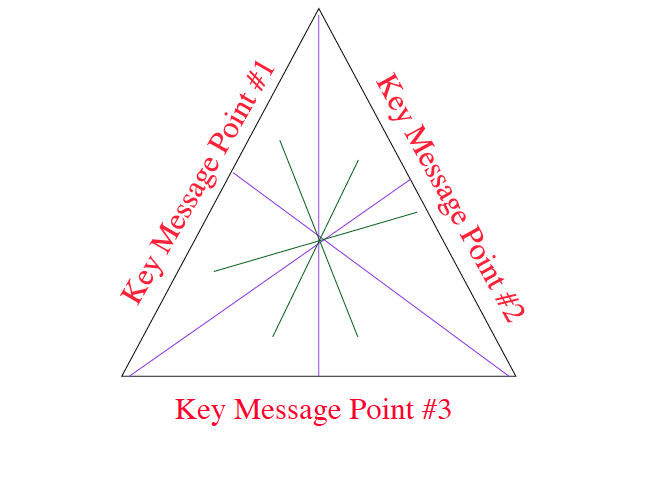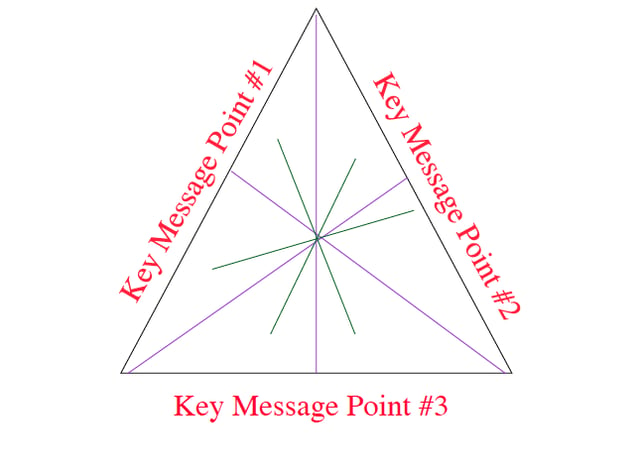How to Use Your Core Values to Inspire, Retain, and Energize Your Team
For the last few decades, but especially so in recent years, people are seeking out more than just an income from their place of employment. More...


For many years the message triangle has been one of the tools I use most often for clients and for myself. Whenever a major speech, news event or media interview looms, developing a message triangle is my starting point. Here’s why — plus a three-step guide to developing and using a message triangle effectively for your next speaking opportunity.
The message triangle is a tool designed to help you speak to your audience successfully by getting across your key messages in a compelling, concise and credible manner. It is based on the principle that it is easier to visualize an image than it is to memorize a lot of words.
"The message triangle offers focus and a shelter for your thinking."
Each side of the triangle represents a broad message. Generally, each of the three broad messages is equally important.
With open and receptive audiences, it ensures you communicate key messages in a way that resonates and is memorable.
With unfriendly or skeptical audiences, it ensures you maintain control of the agenda.
You want to begin with the context of the event, meeting or presentation. Ask yourself a series of questions, and record your answers:
You want to develop a maximum of Three Key Message Points for your triangle. (In a pinch, the simple act of thinking through your context and quickly sketching a triangle with three messages on the proverbial napkin can improve your effectiveness immeasurably.)
It may help to think of your key messages as a path that moves your audience from where it began, directly and unequivocally toward your objective. Social change and advocacy messages that are framed in a way that resonates with people’s core values (e.g., fairness, equality, freedom, honesty) are the most powerful.
Ideally, and whenever you might face an antagonistic audience, you will want to make the time to develop credible supporting proofs for each of your key messages.
Supporting proofs are sound bites such as:
You do not need to memorize massive amounts of detail, but you will want to know the source of any evidence you are using as supporting proofs. Although frames are more powerful than facts, a message that is factually inaccurate will damage your credibility.
Your final step is practicing the use of specific points to redirect off-message questions or issues, and to bridge back to your triangle message points. (You often see this technique in practice to its extreme when watching politicians running for statewide or national office.)
If at all possible, practice in front of colleagues, friends or family and encourage them to ask questions. We may do this twice for an event that is especially important for a client. In the first go round we pretend to be a friendly audience and focus just on asking clarifying questions. In the second practice, we may act as a hostile audience (or a reporter) and ask hard or challenging questions.
With a well-developed message triangle prepared, now you can relax and enjoy yourself at that big speech or event — confident you have prepared in the best way possible to present your case in a compelling, concise and credible manner.
Now, go forth and change the world, or your business market!

For the last few decades, but especially so in recent years, people are seeking out more than just an income from their place of employment. More...

You know nonprofit organizations need websites just as small businesses do, but you may be surprised to learn nonprofit sites can be more complex and...

In today’s rapidly evolving media landscape, understanding where and how your story is told isn’t just strategic—it’s essential. How you communicate...